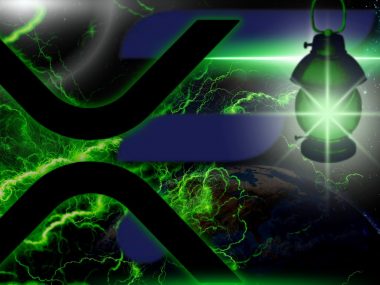Analysis and explanation of how the new distribution model is best for the network by @banker_def
Of the 45B FLR eligible for claim by the XRP community, approximately 26B FLR was claimed by XRP community at the ratio of 1 XRP:1.0073 FLR. The original distribution model for FLR was to release 15% of the 26B FLR. The majority of this release would be facilitated through centralised exchanges that supported the network airdrop with the remaining airdrop going
directly to those that claimed through non-custodial wallets. Every month thereafter for 36 months a release of 2.37% would occur. The original staggered distribution model was as such to limit the amount of FLR tokens that would hit the open market where it could have a negative impact on participation and on the price.
I would say there are 5 categories of FLR holders relevant in the original distribution model:
1. Those that held XRP who don’t plan to participate would sell some or all $FLR every month
2. Those that held XRP and plan to participate, but plan to sell some portion of their $FLR for profits or to trade for other assets
3. Those that bought XRP just for the snapshot and don’t plan to participate would sell every month
4. Those that held XRP and plan to participate fully may want to purchase more $FLR once it is trading
5. Those who were not part of the claim and want to purchase $FLR to participate
Now, a quick recap of the Flare ecosystem is warranted to understand the rationale behind the recent proposed governance proposal to change the distribution model.
The native FLR token can be wrapped to wFLR where it can participate in direct price submissions, or indirectly through delegating to price providers, to the Flare Time Series Oracle.
A healthy distribution of wFLR (vote power) to many different data providers not only increases the accuracy and reliability of the FTSO, but ultimately decentralisation of the network as price providers become validators for the network if they gain material vote power and accuracy.
Remember also, the native token FLR would act as collateral for other protocols within the Flare ecosystem, such as collateral in the F-Asset system. A collateral asset that significantly decreases in price is not healthy for the system and for the agents facilitating the minting of F-Assets.
The new distribution model was proposed as a governance vote to change the distribution model described above. The new distribution model entails releasing 15% of the claimed 26B FLR to supporting exchanges and to self-custody claimants. The rest of the claimed distribution (85%) would be set aside to a distribution pool where it is released to any network participant
that wraps their native FLR into wFLR and/or delegates this vote power to FTSO providers. It does not matter where the participant obtained their FLR – whether it was from the 15% airdrop; purchased and redeemed through exchange IOUs; purchased on the open market when live trading occurs; or obtained from a generous friend who sent you some FLR. The amount you
receive from the distribution pool depends only on the amount of wFLR your wallet address contains relative to the total wFLR by the entire network at the time of the monthly snapshot.
In other words:
Amount of FLR received each month = [(your total VP) / (total network VP)] x 611M
Where VP is vote power equal to the amount of wFLR you hold (1:1)
And 611M is the total 22B in the distribution pool divided by 36 months
As to when that snapshot takes place, it is of any random block in that month. The system is able to trace back to any time and determine which address and smart contracts (wFLR) had what amount of vote power. Because the snapshot is random, network participants have no way to game the system and essentially are incentivised to wrap all their native FLR in order to maximise their vote power throughout the month in expectation for the vote power snapshot. Of course, at the same time this wFLR can be delegated to price providers to contribute to the FTSO and earn high inflationary rewards at the onset of the network.
The team at Flare Networks are basically creating the environment where native token holders are incentivised to participate in the FTSO in order to receive additional monthly token distributions. Said network participants benefit from the network’s native inflation (through the FTSO) as well as receiving a greater amount of FLR through the distribution pools each month, at the expense of other claimants who forgo their distributions by not participating.
Such a design incorporates a deep understanding of the emerging field of cryptoeconomics, where digital incentives drive specific resources and behaviours among self-interested agents in decentralised networks. This ultimately drives security and accelerates network effects on Flare.
It is what’s best for the network.
In my opinion, this is a fantastic design to “train up” network participants to contribute to the network for the long term and to weed out negative externalities – those who claimed FLR and keep them off-chain on the open market to trade. This is called mechanism design. Of course, the other significant and absolutely critical tenet of this proposal is to remove the risk of future distributions of FLR being locked up at exchanges.
Additionally, the Flare team closely observed the distribution model of Songbird’s SGB tokens and implemented such changes in order to maximise delegation participation for the upcoming Flare Networks. As Flare has evolved to serve all chains, the new distribution model also allows other communities to become relevant stakeholders in the network. Those that did not claim FLR now have the ability to earn a proportion of the distribution pool each month by purchasing FLR from the open market and/or accumulate rewards in FLR through the FTSO and the upcoming F-Asset system. After exiting the observation period, Flare Networks will be decentralised, with less than 33% of the nodes run by the Foundation. Where it gets very interesting for me is the next phase of development in Flare’s ecosystem, namely F-Assets and building up TVL in the system. With the 20B+ FLR allocated to rewards service pools that will reward F-Asset minters on a daily basis (details TBA), this gives any F-Asset holders (whether XRP claimants or not) the ability to earn massive rewards in FLR which they could then delegate and gain a greater share of future monthly distribution pools. Those that did claim FLR and are actively participating in delegating to FTSO for monthly distributions but do not mint F-Assets will not remain as competitive to those that do mint F-Assets and all the above. Again, although not all will be happy with this, it does incentivise external value (XRP, BTC, DOGE etc) to come onto the network and increase the TVL of the system. This indirectly benefits ALL FLR holders since a lot of value in FLR must be locked up in the F-Assets collateral system, hence reducing supply in the open market and driving up the demand to purchase FLR.
In summary, the proposed distribution model removes the risk of FLR being locked up at centralised exchanges over 3 years and instead moves all future distributions into a distribution pool where participants will have the opportunity to yield much more each month if they continually participate and contribute to the network, at the expense of those who do not contribute. The important point to drive home here is that once the network is completely decentralised upon exiting observation period, the value and success of Flare Networks is solely up to its network participants. The Flare team has simply set up the mechanism design and tokenomics to give us the citizens properly aligned incentives to contribute and build out the foundational primitives for a successful Layer 1 blockchain







